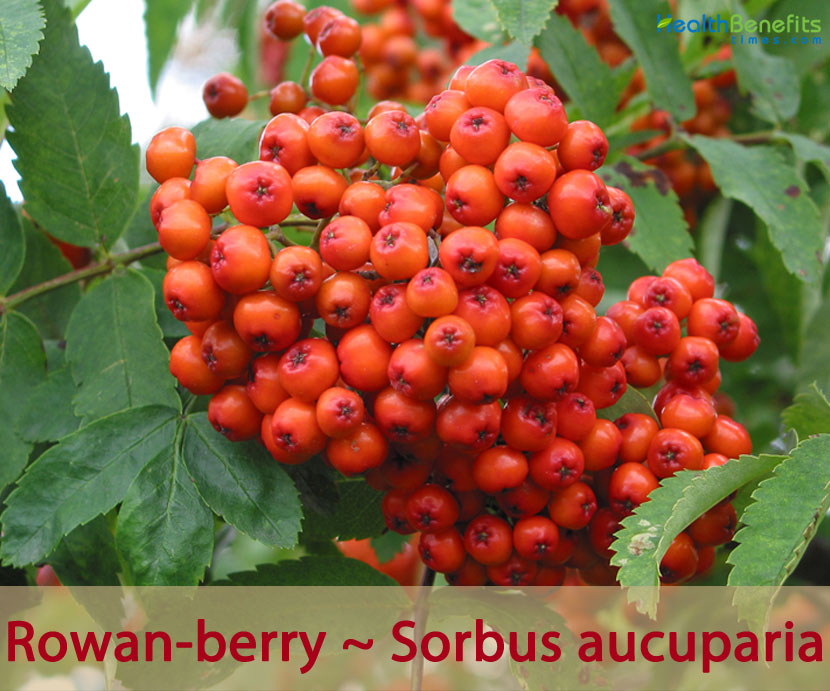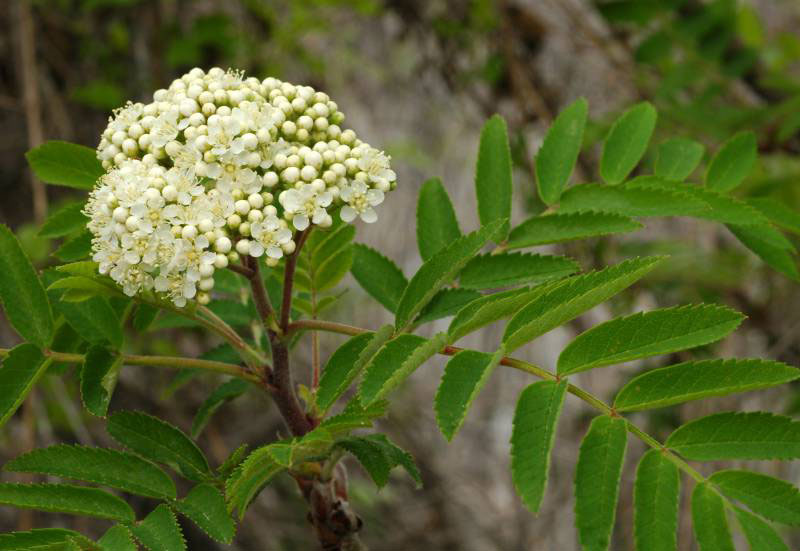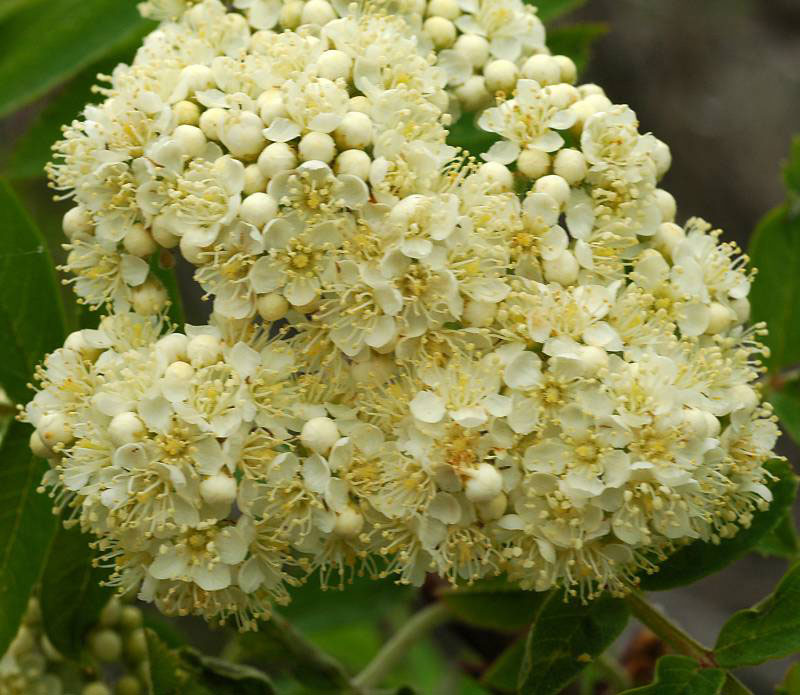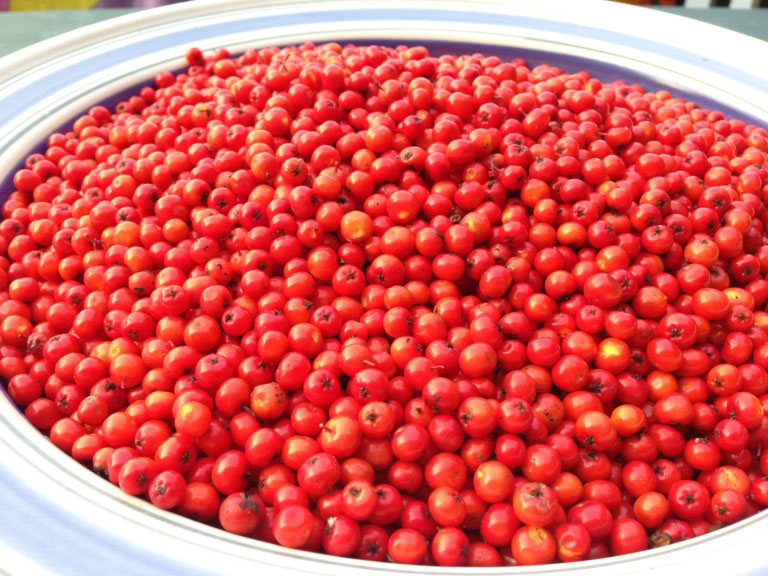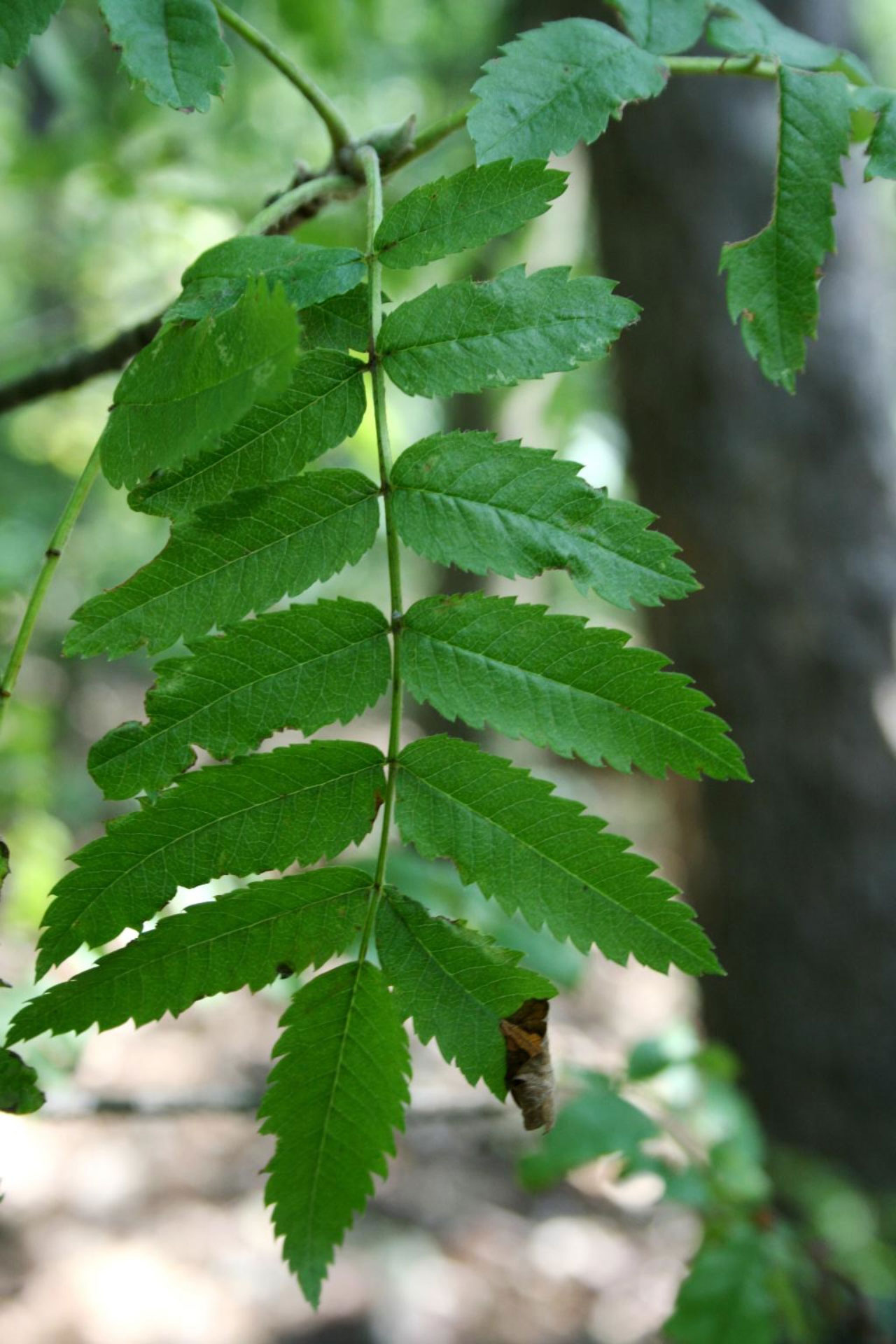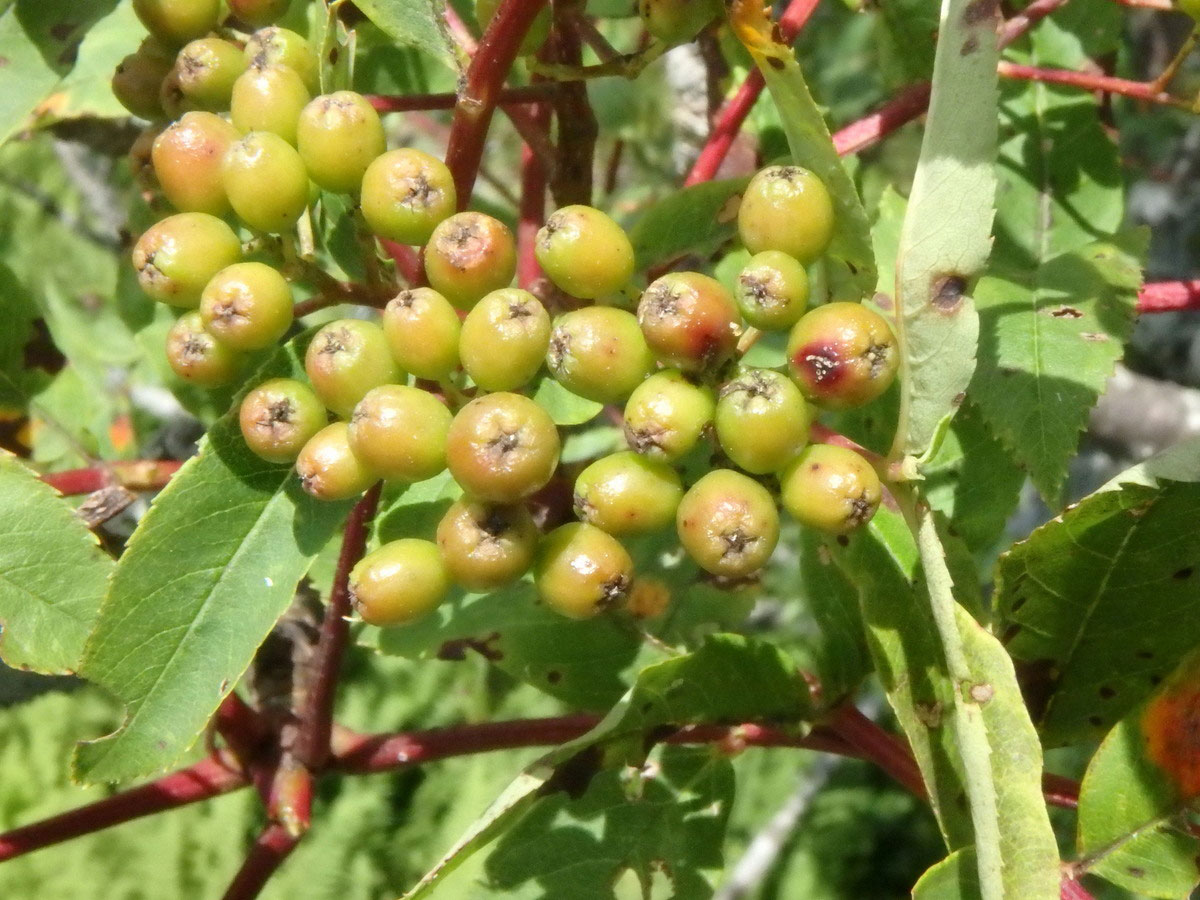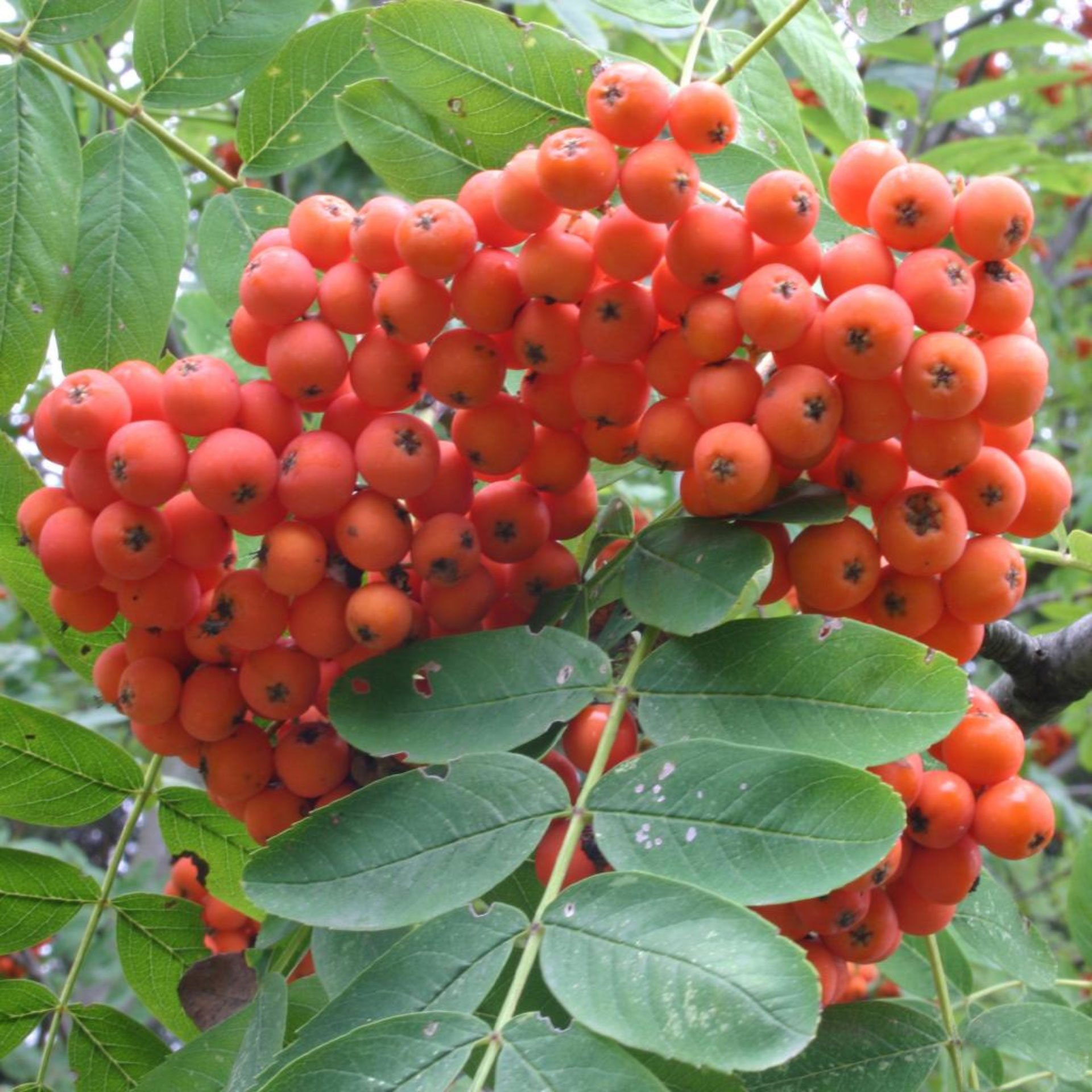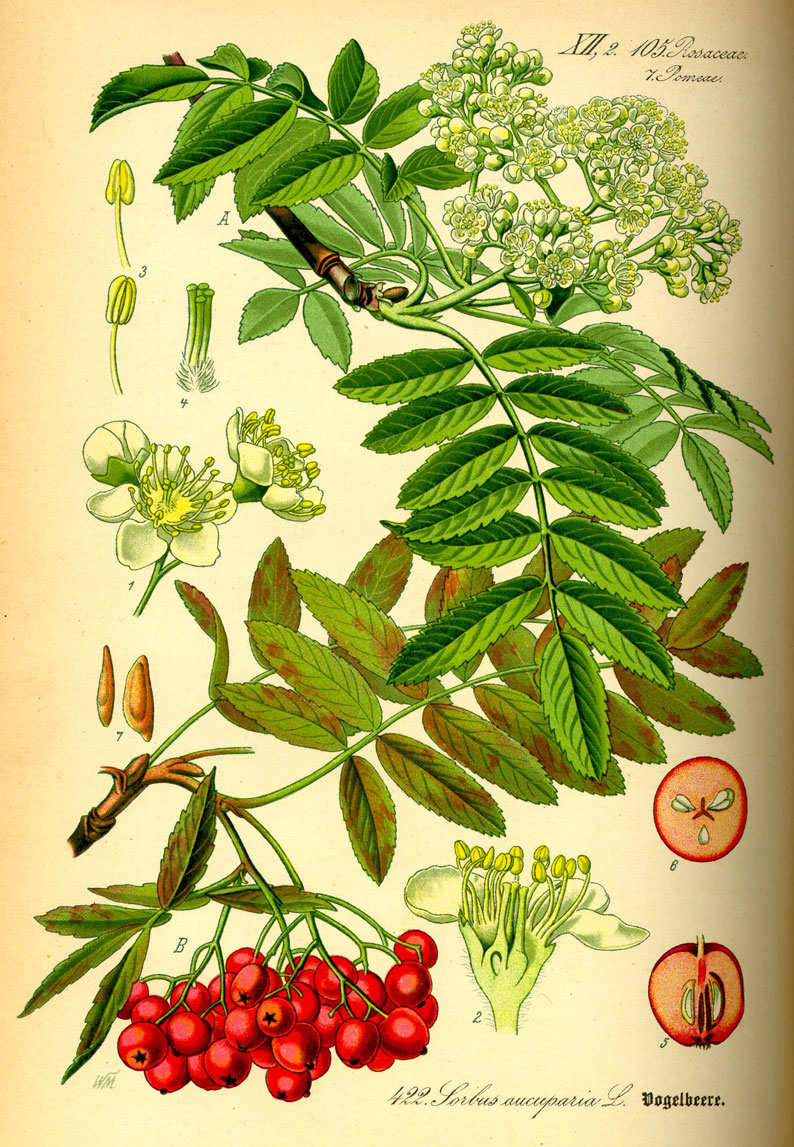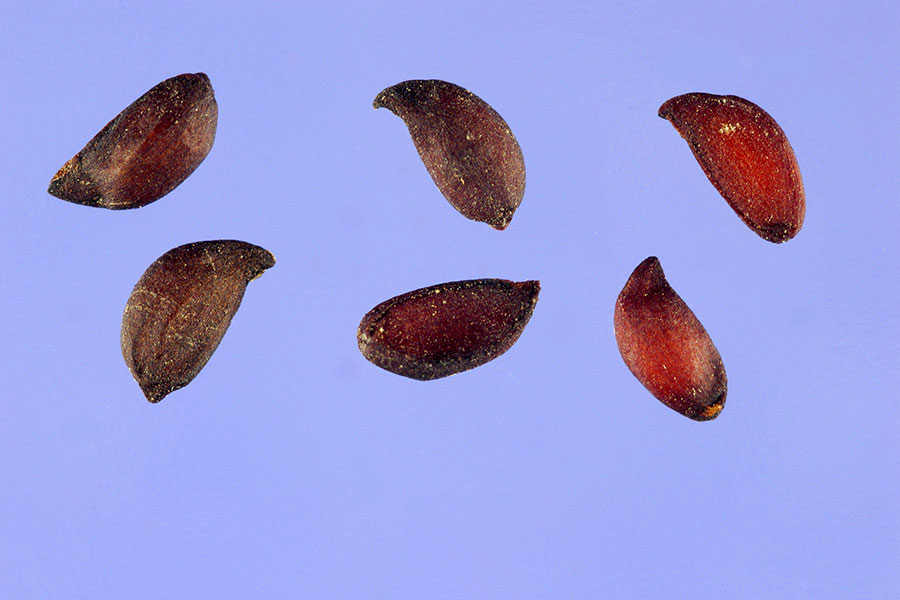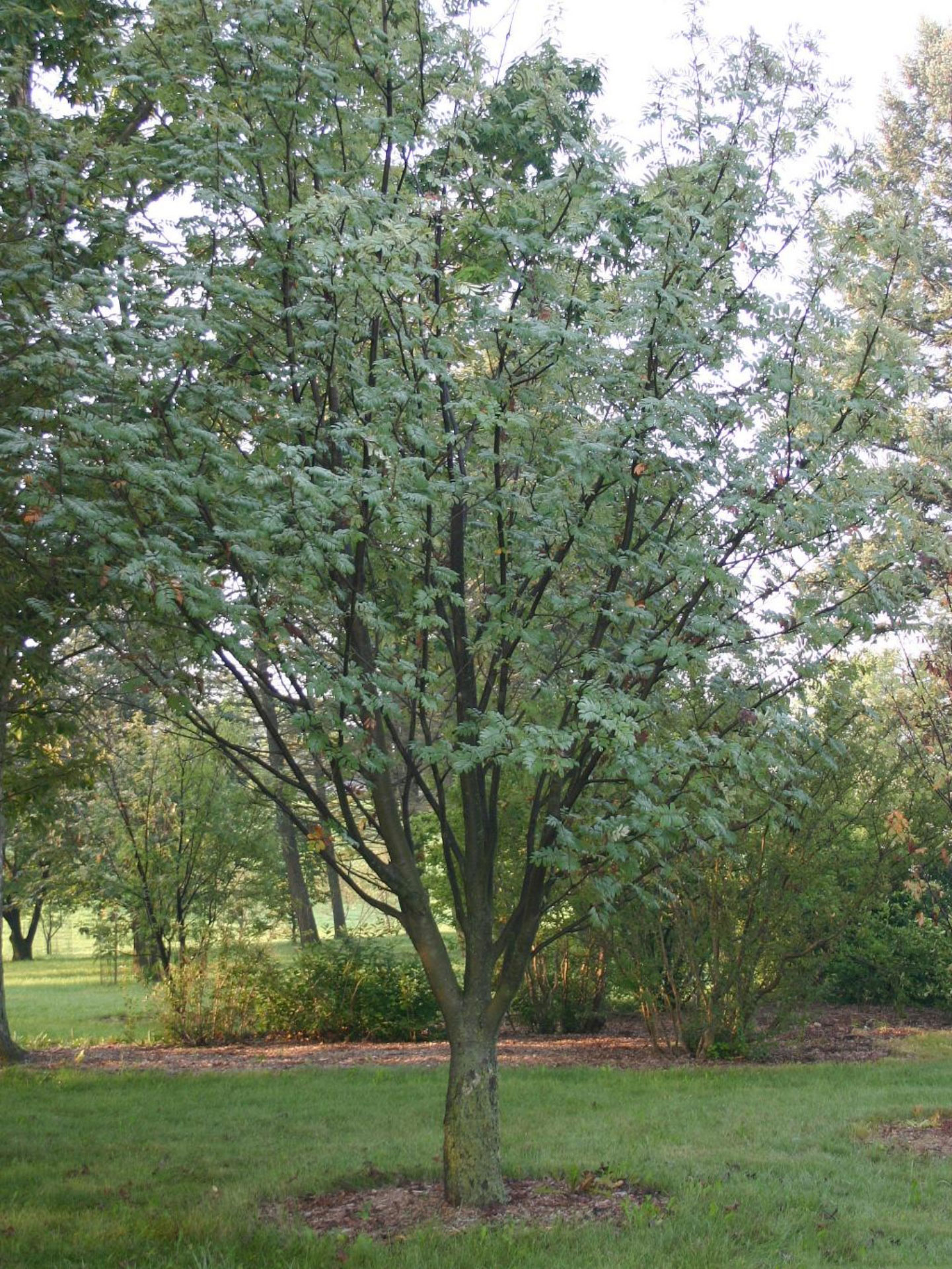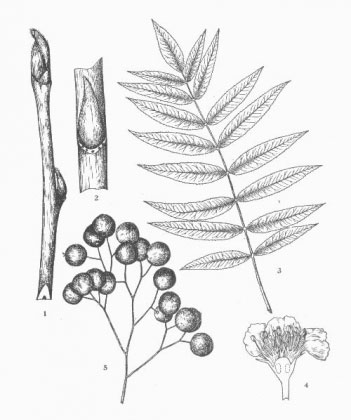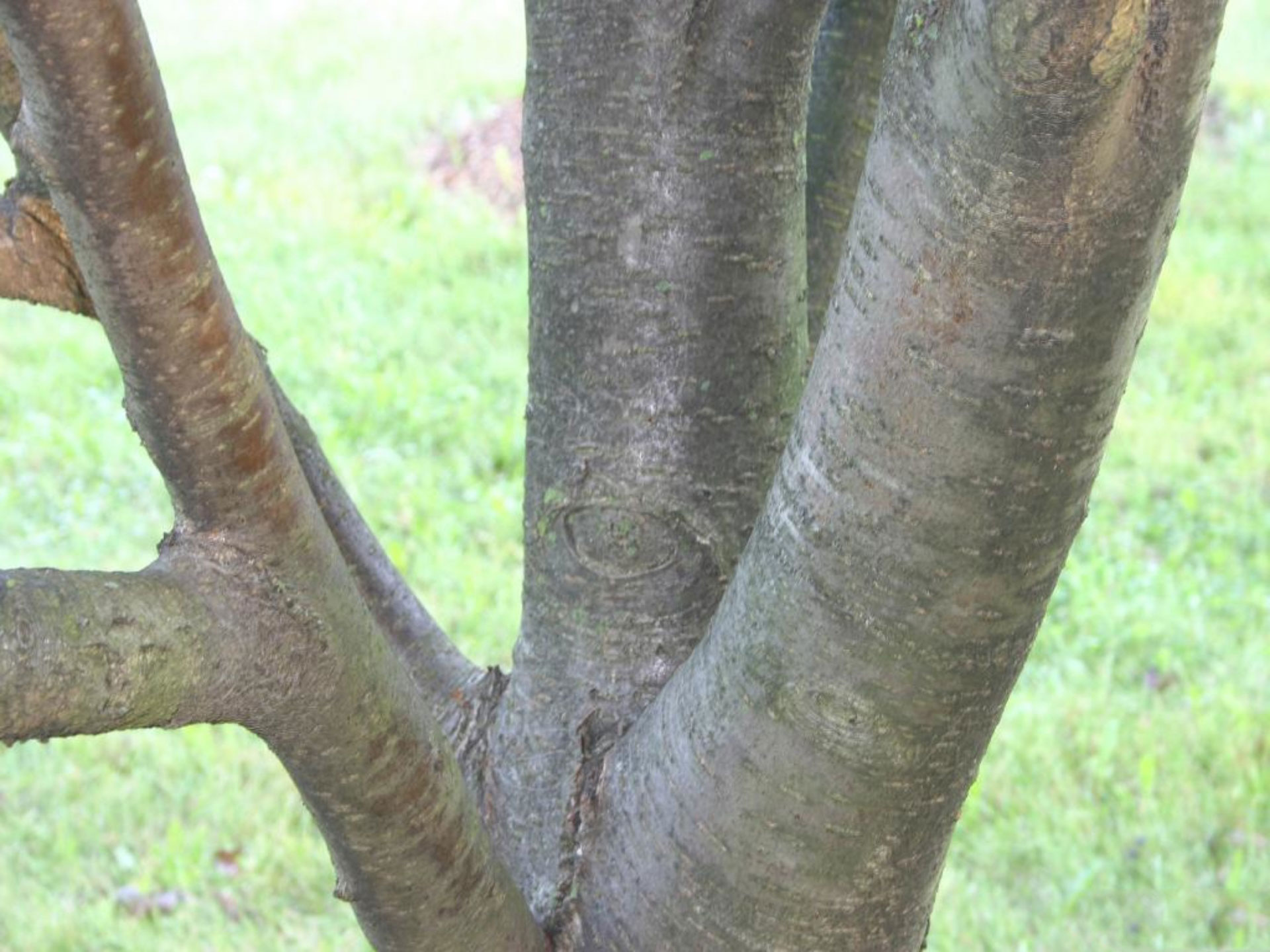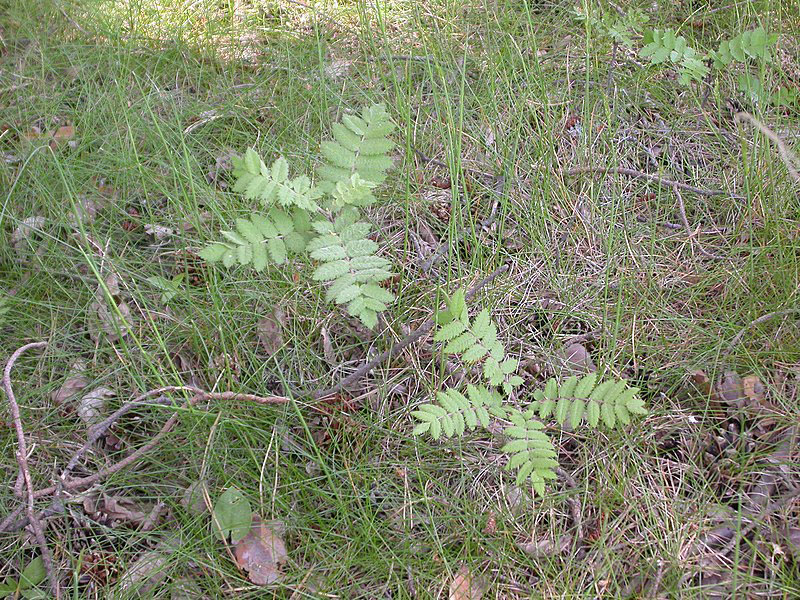| Mountain ash (Rowan-berry) Quick Facts | |
|---|---|
| Name: | Mountain ash (Rowan-berry) |
| Scientific Name: | Sorbus aucuparia |
| Origin | Most of Europe, Iceland, northern Africa, and western Asia |
| Colors | Initially green and then typically turn to orange or scarlet in color as they mature. |
| Shapes | Small, persistent round pomes between 8 and 10 mm in diameter |
| Taste | Tart and Bitter |
| Health benefits | Avoid Asthmatic attacks, Improves digestive health, Wound Healing, Promotes healthy brain and system, Stop wheezing Attacks, Skin care benefits, Lowers the risks of heart diseases, Reduces Premature Aging, Respiratory ailments, Boost Immunity, Antibacterial Activity, Helps stop Cancer |
| Name | Mountain ash (Rowan-berry) |
|---|---|
| Scientific Name | Sorbus aucuparia |
| Native | Most of Europe, Iceland, northern Africa, and western Asia. It has naturalized in 29 states of the U.S. and much of Canada. European mountain ash has been documented from the Pacific Maritime and Interior-Boreal eco- geographic regions of Alaska. The range extends from Madeira, the British Isles and Iceland to Russia and northern China. Unlike many plants with similar distributions, it is not native to Japan |
| Common Names | Ash berry, common mountain ash, European mountain ash, gaelic caorunn, quickbeam, quicken tree, rantry, rowan, rowan tree, witchwood, Rowan Berries, Whitty Pear, Mountain-ash, European Ash, Bilberry, Thor’s Helper, Wiggy, Delight of the Eye, Dogberry, common rowan |
| Name in Other Languages | Afrikaans: Bergas Albanian: Hirit malor, vadhë Amharic: Terara āmedi (ተራራ አመድ) Arabic: Ramad aljabal (رماد الجبل), shajarat alsaman (شجرة السمن) Aragonese: Bixorder Armenian: Lerrnayin mokhir (լեռնային մոխիր), Arosi Kuznets’ovi (Արոսի Կուզնեցովի) Atikamekw: Maskominanatikw Azerbaijani: Dağ külü, Adi quşarmudu Basque: Otsalizarra, Otsalizar Belarusian: Rabina zvyčajnaja (Рабіна звычайная) Bengali: Parbata chā I (পর্বত ছাই) Bulgarian: Planinska pepel (планинска пепел), ofika (офика) Burmese: Pyaar mhuan (ပြာမှုန်) Catalan: Moixera de guilla, server de bosc, server de caçadors Chinese: -Shān huī (山灰), Ou zhou hua qiu (欧洲花楸), Huā qiū shù (花楸树) Chuvash: Pilesh (Пилеш) Croatian: Planinski pepeo, planinska oskoruša, Jarebika Czech: Horský popel, jeřáb ptačí Czechoslovakia (former): Jerab sladkoplody Danish: Bjergaske, Almindelig røn, Flyverøn, ron Dutch: Berg as, Wilde lijsterbes, Lijsterbes, Lijsterbes soort, Peer soort English: Mountain ash, European mountain-ash, Quickbeam, Rowan, Rowan-berry, Quicken-tree, Dogberry, Rowan tree, witchwood, common mountain ash, common rowan Esperanto: Monta cindro, Birdokaptista sorbuso Estonian: Pihlakas, harilik pihlakas Filipino: Bundok na abo Finland: Pihlaya, rönn Finnish: Pihlaja, Kotipihlaja, Arbre à grives, Arbre aux grives, Poirier des oiseaux, Sorbier des oiseaux French: Sorbier, Sorbier des oiseleurs, sorbier des oiseaux, alisier des bois, arbre à grives, cormier des chasseurs, sorbier des grives, sorbier sauvage , thymier Galician: Capudre Georgian: Mtis natsari (მთის ნაცარი), tsirtseli (ცირცელი) German: Berg Asche, Drosselbeere, Eberesche, Gemeine Eberesche, Kronawetterbeere, Quitschbeere, Quitschstrauch, Vogelbeerbaum, Vogelbeere, Vogelkirsche, Wilde Vogelbeere, Faulesche, nordische Eberesche , Vogelbeereberesche, Gewöhnliche Vogelbeere, Vogelbeerbaum Greek: Téfra sto vounó (τέφρα στο βουνό), Sorviá Aoukopária (Σορβιά Αουκοπάρια) Gujarati: Parvata rākha (પર્વત રાખ) Hausa: Dutse ash Hebrew: אפר הרים, סורבוס Hindi: Giriprabhoorj (गिरिप्रभूर्ज) Hungarian: Hegyi kőris, Gálnafa , Madárberkenye, Veresberkenye, Vörösberkenye Icelandic: Fjallaska, reyniviður, Rúgur, Reyniviður, Ilmreynir Indonesian: Abu gunung Irish: Fuinseog sléibhe Italian: Montagna di cenere, Sorbo rosso, Sorbo selvatico, Sorbo degli uccellatori, sorbo degli uccelli, coralline, sorbo ottobrino, Japanese: Yama no hai (山の灰), Seiyou nanakamado (セイヨウナナカマド) Javanese: Awu gunung Kannada: Parvata būdi (ಪರ್ವತ ಬೂದಿ) Kashubian: Jarzebiok Kazakh: Taw küli (тау күлі), Kädimgi şeten (Кәдімгі шетен) Korean: San aeswi (산 애쉬) Kurdish: Ash ash Lao: Khi theoa phukhao (ຂີ້ເທົ່າພູເຂົາ) Latin: Ornusque incanuit Latvian: Pīlādži, parastais pīlādzis, Parastais pīlādzis Lithuanian: Kalnų pelenai, paprastasis šermukšnis Livvi: Pihl’ai Lombard: Marözen Lower Sorbian: Wšedna jerjebina Macedonian: Planinska pepel (планинска пепел), Ofika (Офика) Malagasy: Lavenona tendrombohitra Malay: Abu gunung Malayalam: Parvata cāraṁ (പർവത ചാരം) Maltese: Irmied tal-muntanji Marathi: Mauntan raakh (माउंटन राख) Mingrelian: Amchvasha (ამჩვაშა) Mongolian: Uulyn üns (уулын үнс) Nepali: Pahāḍī kharānī (पहाडी खरानी) Netherlands: Wilde Lijsterbes North Frisian: Fögelbei Norwegian: Fjellaske, Rogn Occitan: Bedùr, besur, bisoèr, bizurt, cheulaté, mastajoé, pan d’audetch, Sorbièr dels auselaires Oriya: ପର୍ବତ ପାଉଁଶ | Pashto: غره ایخ Persian: انواع تیس, زبانگنجشک کوهی Polish: Pył wulkaniczny, Jarzab pospolita , Jarzebina, jarząb zwyczajny, jarząb pospolity Portuguese: Montanha de cinzas, Sorveira, cornogodinlio, sorveira, tramazeira, tramazeira, cornogodinho, escancerejo, sorveira-brava, sorveira-dos-passarinhos Punjabi: Pahāṛī su āha (ਪਹਾੜੀ ਸੁਆਹ) Romansh: Culaischen Romanian: Scoruş Russian: Ryabina (рябина), Ryabina obyknovennaya (Рябина обыкновенная), rjabina obyknovennaja Sami: Skáhpi Scottish Gaelic: Caorann, Luis Serbian: Planinski pepeo (планински пепео), Jerebika, Navadna jerebika, Mukinja (Мукиња) Sindhi: جابلو راھ Sinhala: Kan̆du aḷu (කඳු අළු) Slovakian: Jarabina vtáčia Slovenian: Gorski pepel, Jarebika, Jarebikina mukinja Spanish: Cenizas de montaña, Serbal de cazadores, Serbal Silvestre, serval de los cazadores; serval Silvestre, argumon, cornabute, escornacabras, llameiro, orno, serbellón, sorbital, Sudanese: Lebu gunung Swedish: Bergsaska, (Koti)pihlaja, Rönn, vanlig roenn Tajik: Xokistar kūh (хокистар кӯҳ) Tamil: Malai cāmpal (மலை சாம்பல்) Telugu: Parvata būḍida (పర్వత బూడిద) Thai: T̄hêā p̣hūk̄heā (เถ้าภูเขา) Turkish: Dağ külü, kuşüvezi Udmurt: Gord paléz’ (Горд палэзь) Ukrainian: Horobyna (горобина), riabina, horobyna zvychayna (горобина звичайна) Upper Sorbian: Wšědna wjerjebina Urdu: پہاڑی راھ Uzbek: Tog ‘kuli Vietnamese: Tro núi Walloon: Håvurna Welsh: lludw mynydd, Cerddin, Cerddinen, Cerdin, Ceri, Criafallen , Criafol, Criafolen, Cyrawel, Cyriawol, Pren Ceri, Pren Criafol Zulu: Umlotha wasentabeni |
| Plant Growth Habit | Upright, medium-sized, slender, short-lived deciduous tree |
| Growing Climates | Woods, scrub and mountain rocks, mainly on lighter soil, rare or thickets, roadsides, woods, other habitats near towns, scattered in remote natural settings, rocky places, glens and mountain riversides |
| Soil | Grows on soil that is moderately dry to moderately damp, acidic, low on nutrients, sandy, and loose. It often grows in stony soil or clay soil, but also sandy soil or wet peat. The plant grows best on fresh, loose, and fertile soil, prefers average humidity, and does not tolerate saline soil or waterlogging |
| Plant Size | 7 ½ to 12 m tall |
| Root | Roots are tough and fibrous and form an anchoring root system, with a morphogenesis limited by groundwater table, prevailing direction of wind and slope |
| Trunk | Slender and cylindrical and reaches up to 40 cm in diameter, and the branches stick out and are slanted upwards |
| Bark | Bark of a young S. aucuparia is yellowish gray and gleaming and becomes gray-black with lengthwise cracks in advanced age |
| Wood | Wide reddish white sapwood and a light brown to reddish brown heartwood |
| Leaf | Elongated-lanceolate in shape, 2 to 6 cm long, and 1 to 2.5 cm wide with a sharply serrated edge, and have short stems or sit close to the central vein except for the outermost leaflet |
| Flowering season | May to June |
| Flower | Flowers are between 8 and 10 mm in diameter and have five small, yellowish green and triangular sepals that are covered in hairs or bare. The five round or oval petals are yellowish white and the flower has up to 25 stamens fused with the corolla |
| Fruit Shape & Size | Small, persistent round pomes between 8 and 10 mm in diameter |
| Fruit Color | Initially green and then typically turn to orange or scarlet in color as they mature |
| Seed | One or two flat, narrow, and pointed reddish seeds |
| Propagation | By seed, softwood cuttings or grafting or shield budding |
| Taste | Tart and Bitter |
| Plant Parts Used | Bark, fruit, Leaves |
| Season | October-November till December |
| Health Benefits |
|
Plant Description
Mountain ash (Rowan-berry) is an upright, medium-sized, slender, short-lived deciduous tree that normally grows about 7 ½ to 12 m tall with a rounded, open crown. The crown is loose and roundish or irregularly shaped but wide and the plant often grows multiple trunks. Trunk is slender and cylindrical and reaches up to 40 cm in diameter, and the branches stick out and are slanted upwards. The bark of a young S. aucuparia is yellowish gray and gleaming and becomes gray-black with lengthwise cracks in advanced age; it descales in small flakes. Lenticels in the bark are elongated and colored a bright ocher. The plant does not often grow older than 80 years and is one of the shortest-lived trees in temperate climate. Wood of S. aucuparia has wide reddish white sapwood and a light brown to reddish brown heartwood. It is diffuse-porous, flexible, elastic, and tough, but not durable, with a density of 600 to 700 kg/m3 in a dried state. The roots grow wide and deep, and the plant is capable of root sprouting and can regenerate after coppicing.
The plant is found growing in thickets, roadsides, woods, other habitats near towns, scattered in remote natural settings, rocky places, glens and mountain riversides. It grows on soil that is moderately dry to moderately damp, acidic, low on nutrients, sandy, and loose. It often grows in stony soil or clay soil, but also sandy soil or wet peat. The plant grows best on fresh, loose, and fertile soil and also prefers average humidity, and does not tolerate saline soil or waterlogging.
Leaves
The compound leaves are pinnate with 4 to 9 pairs of leaflets on either side of a terete central vein and with a terminal leaflet. There are paired leaf-like stipules at the base of the petiole. The leaves are up to 20 cm long, 8 to 12 cm wide, and arranged in an alternate leaf pattern on a branch, which are opposite and without stipules. The leaflets are elongated-lanceolate in shape, 2 to 6 cm long, and 1 to 2.5 cm wide with a sharply serrated edge, and have short stems or sit close to the central vein except for the outermost leaflet. Leaflets are covered in gray-silvery hairs after sprouting but become mostly bare after they unfold. Their upper side is dark green and their underside is a grayish green and felted. Young leaflets smell like marzipan when brayed. The leaflets are asymmetrical at the bottom. Mountain ash (Rowan-berry) foliage grows in May and turns yellow in autumn or a dark red in dry locations.
| Leaf arrangement | Alternate |
| Leaf type | Odd-pinnately compound |
| Leaf margin | Serrate |
| Leaf shape | Oblong, lanceolate, elliptic (oval) |
| Leaf venation | Pinnate |
| Leaf type and persistence | Deciduous |
| Leaf blade length | Less than 2 inches |
| Leaf color | Green |
| Fall color | Yellow, red |
| Fall characteristic | Showy |
Flowers
Mountain ash (Rowan-berry) is monoecious. It reaches maturity at age 10 and carries ample fruit almost every year. The plant flowers from May to June (on occasion again in September) in many yellowish white corymbs that consists of about 250 flowers. The corymbs are large, upright, and bulging. The flowers are between 8 and 10 mm in diameter and have five small, yellowish green and triangular sepals that are covered in hairs or bare. The five round or oval petals are yellowish white and the flower has up to 25 stamens fused with the corolla to form a hypanthium and an ovary with two to five styles; the style is fused with the receptacle. Flowers have an unpleasant trimethylamine smell. Their nectar is high in fructose and glucose.
| Flower color | White/cream/gray |
| Flower characteristics | Showy |
Fruit
Fertile flowers are followed by round pomes between 8 and 10 mm in diameter that ripen from August to October. Fruit are initially green and then typically turn to orange or scarlet in color as they mature. The sepals persist as a black, five-pointed star on the ripe fruit. Corymb carries 80 to 100 pomes. A pome consists of a star-shaped ovary with two to five locules each containing one or two flat, narrow, and pointed reddish seeds. Flesh of the fruit consists of carotenoids, citric acid, malic acid, parasorbic acid, pectin, pro-vitamin A, sorbitol, tannin, and vitamin C. The seeds consist of glycoside.
Fruit and foliage of S. aucuparia have been used by humans in the creation of dishes and beverages, as a folk medicine, and as fodder for livestock. It’s tough and flexible wood has traditionally been used for woodworking. It is planted to fortify soil in mountain regions or as an ornamental tree and has several cultivars.
| Fruit shape | Round |
| Fruit length | Less than .5 inch |
| Fruit covering | Fleshy |
| Fruit color | Red, orange, yellow |
| Fruit characteristics | Attracts birds; showy; fruit/leaves a litter problem |
Health Benefits of Rowan Berries
Listed below are some of the popular health benefits of using rowanberries. Let’s take a look at the benefits of rowan berries.
1. Helps stop Cancer
High levels of antioxidants found in rowan berries make it a very powerful super food against various chronic diseases, including cancer. Researchers have stated that quercetin varieties and sorbic acid both act as antioxidants, preventing the harmful effects of free radicals throughout the body. Free radicals are the dangerous byproducts of cellular metabolism that can cause healthy cells to mutate into cancerous cells, or simply perish. Eating rowan berries can significantly boost your antioxidant levels, which means preventing cancerous growths, reducing the chances of premature aging, improving the health of your skin, increasing cell regeneration and healing rates, and boosting eye health, including reducing the chances of macular degeneration.
2. Antibacterial Activity
Sorbic acid has been directly related to reducing the effects of microbial and bacterial agents on the skin and in the body. Thus, in cosmetic use, rowan berry extracts are occasionally used, but as a food source, it can function as an antibacterial and antimicrobial booster.
3. Boost Immunity
Though rowan berries aren’t loaded with a variety of vitamins, they are found to have high levels of vitamin C. Ascorbic acid is a very important element in human health, as it can encourage the production of white blood cells and act as an antioxidant as well. Additionally, vitamin C is essential for a number of bodily processes, including the creation of collagen, which strengthens muscle tissue and helps to build/repair blood vessels.
4. Respiratory ailments
In traditional medicine, juice of rowan berry has been used as a remedy for several respiratory ailments. It has been found to be effective in calming sore throats, reducing inflammation of the respiratory tract, relieving congestion and asthma. The anti-inflammatory effects of this berry may be attributed to the presence of high levels of antioxidant compounds such as vitamin C, which helps in boosting the immune system as well as in soothing the symptoms of asthma.
5. Reduces Premature Aging
Antioxidants found in Mountain ash (Rowan-berry), are terribly helpful in preventing premature aging of the skin. Skin that’s continually exposed to the damaging ultraviolet radiation is at risk of turning into broken, and show symptoms of serious wear. However, mountain ash berries, with their made antioxidant content, facilitate to confirm that albuminoid synthesis is unbroken high and thus the structural integrity of the skin is unbroken intact.
6. Promotes Immunity
Rowan Berries possess an upscale spectrum of inhibitors and antioxidant vitamins, the foremost notable of that is antioxidant. Antioxidant is well-established to assist strengthen the system against unwellness, because it will facilitate to stimulate the assembly of white blood cells that engulf and destroy foreign pathogens before they’ll cause injury to the body. Additionally, antioxidant that initiates albuminoid synthesis plays a crucial role to keep your vessel structure tight, in order that fluid doesn’t break.
7. Lowers the risks of heart diseases
Rowan berry offers a protective effect on your cardiovascular system by lowering cholesterol in the blood stream and also by lowering high blood pressure. Research suggests that this fruit helps in considerably lowering cholesterol levels in the blood. Rowan berry consists of high levels of potassium that helps in preventing hypertension by neutralizing the effects of sodium in the body.
8. Skin care benefits
Rowan berry is high in vitamin content and possess astringent properties, which makes it beneficial for the health of the skin. It offers a regenerative and rejuvenating effect on the skin cells. It helps in increasing the blood circulation and also in brightening your complexion. Antioxidants in this fruit help in keeping the skin young and beautiful by preventing free radical damage to the skin cells. A popular anti-aging remedy is to combine rowan berry with honey and use it on the skin.
9. Stop wheezing Attacks
Rowan berries, like several of the opposite berries supply support in serving to stop wheezing attacks, or a minimum of scale back the frequency of them. They consist of little amounts of bioflavonoids that are studied and tested to enhance symptoms of respiratory disorder mostly in kids.
10. Promotes healthy brain and system
Rowan berries supply trace mineral metal, essential for making certain healthy perform of the brain and nerves. Additionally metal helps to confirm that nerve signals square measure transmitted expeditiously to the suitable organ, whether or not that be for production of hormones, or to assist with metabolism of consumed food.
11. Wound Healing
Healing of wounds differs greatly from person to person, with some nearly healing long, whereas others might take weeks. You can’t modify your genetic gifts; you’ll influence them by supporting it with practical diet. Mountain ash berries, due to their albuminoid synthesizing properties, will facilitate to hurry up the closure of wounds and thus the recovery of skin, serving to reduce the looks of scars within the method.
12. Improves digestive health
As mentioned earlier, rowan berry is a good source of both soluble and insoluble fiber. Foods rich in dietary fiber are essential for proper digestive health, maintaining normal cholesterol levels and also for preventing many diseases. Fiber helps in improving digestion and in preventing constipation by adding bulk to the stool and in regularizing bowel movements. It also enhances the health of your digestive system by optimizing the functioning of the system. Rowan berry consists of certain organic compounds that are considered to be effective in relieving the symptoms associate with digestive problems like diarrhea.
13. Avoid Asthmatic attacks
It helps to prevent asthmatic attacks and supports respiratory system. It can reduce the frequency of such attacks. There is certain amount of bioflavonoids which improves the symptoms of asthma. It should be consumed by children mostly.
Traditional uses and benefits of Mountain Ash (Rowan berry)
- Fruit is normally used as a jam or an infusion to treat diarrhea and hemorrhoids.
- An infusion can also be used as a gargle for sore throats and as a wash to treat hemorrhoids and excessive vaginal discharge.
- In small quantities this acts as a stimulant to the respiratory system but in larger doses can cause respiratory failure and death.
- Both the flowers and the fruit are aperient, mildly diuretic, laxative and emmenagogue.
- In herbal medicine, a decoction of the bark is given for diarrhea and used as a vaginal injection in leucorrhoea, etc.
- Ripe berries furnish an acidulous and astringent gargle for sore throats and inflamed tonsils.
- The astringent infusion is used as a remedy in hemorrhoids and strangury.
- Fruit are eaten as a mash in small amounts against lack of appetite or an upset stomach and stimulate production of gastric acid.
- In folk medicine they are used as a laxative, against rheumatism and kidney disease, and as a gargled juice against hoarseness.
- The bark has been used to treat fevers associated with malaria or similar illnesses in America.
- Mountain ash berries were particularly prescribed to treat scurvy (a disease with symptoms of swollen and bleeding gums, livid spots on the skin, prostration, etc.) – caused by shortage of vitamin C in the body.
- Infusions prepared with these rounded red berries may also be used for rinsing the mouth to treat tender throats as well as a wash for hemorrhoids and disproportionate discharge from the vagina.
- Infusion prepared with the flowers and fruits of this tree are effective in treating painful menstruation, constipation as well as kidney diseases.
Culinary Uses
- Fruit can be consumed raw or cooked.
- It can be used to make delicious, if slightly acidulous, jams and preserves.
- The leaves and flowers are used as a tea substitute.
- Young leaves are said to be a famine food but they contain a cyanogenic glycoside.
- Roasted seeds of mountain ash are also used as a substitute for coffee by people in many areas.
- Leaves were fermented with leaves of sweet gale and oak bark to create herb beer.
- Berries were dried and then ground and added to flour to make bread and to soups as a thickener.
- Berries can be used to make jams, jellies, conserves, marmalades, vinegar, wines, spirits, confectionery, ketchup, pies and soups.
Rowan Jelly Recipe
Ingredients
- 500g rowanberries (frozen 48 hours or longer, then defrosted)
- 500g bullace (frozen 48 hours or longer, then defrosted)
- 1 pint of medium cider
- 500g cane sugar
Direction
- Put the rowan berries and bullace in a jam pan along with the cider and slowly bring to the boil. Simmer for 60 minutes.
- Strain through a jelly bag over night or for at least 12 hours. This should yield approximately 1 pint of liquid. For every pint of liquid collected, add 500g of cane sugar.
- Bring the liquid to the boil stirring occasionally until it has reached setting point. Setting point is when you can put a bit of the hot mixture on a cold plate, wait until it has cooled, and then drag your finger through it. If the liquid does not fall back into a puddle but leaves a path through it then your jelly is ready to bottle.
- Wash your jam jars in hot soapy water, then dry and sterilize in a fan assisted oven at 150°C for 10 minutes.
- Pour the bullace and rowanberry jelly liquid into the hot jam jars and cap. Store in a dark cupboard. They should keep for at least a year. Enjoy.
Rowan Turkish delight
Ingredients
- 1tsp butter
- 450g sugar
- 300ml of Rowan berry juice
- 1tsp lemon juice
- 25g gelatin
- ½tsp of vanilla essence
- 1tbsp of rose water
- 1tbsp pistachio nuts
- 1oz arrowroot or corn flour
Directions
- Butter a 15cm square baking tin and set aside.
- Put the sugar, rowanberry and lemon juice into a saucepan and bring to the boil.
- Continue boiling until the liquid becomes thicker so when you drop some into a bowl of cold water it forms a hard ball. Remove from the stove and let sit for 10 minutes.
- Dissolve the gelatin in a 120ml of hot boiled water, then add the vanilla essence, and mix very well with a wooden spoon. Now pour this into the rowan liquid and mix thoroughly, then our half of it into the baking tin. Sprinkle smashed up pistachios around the surface.
- Next stir the rosewater into the remainder of the rowan liquid and mix well, then pour into the baking tin on top of the pistachios, and set aside to cool before placing overnight in the fridge.
- In the morning turn out the Rowan Turkish Delight, cut into cubes and roll each one in arrowroot powder or corn flour. Serve.
https://www.eatweeds.co.uk/rowan-recipe-turkish-delight
Rowan berry wine
Ingredients
- Rowan berries (2.5 kg)
- Zest and juice of two large lemons
- Finely granulated sugar (1.2 kg)
- Yeast nutrient (1 tsp.)
- Wine tannin (1 tsp.)
- Pectin enzyme (1/2 tbsp.)
- One packet of wine yeast
- Filtered boiling water (5 liters)
Direction
- Mash the rowan berries coarsely by putting them in a plastic bag and with the help of a rolling pin. Bring the water to a boil and then add the sugar.
- Keep stirring until all the sugar has dissolved. Bring the mixture to the boil again and then quickly pour it over the mashed berries.
- Cover the berries and allow the whole mixture to cool. Once cooled, add the other ingredients such as pectin, lemon juice and tannin.
- Cover it again and leave it for about 24 hours. After 24 hours, add the yeast nutrient and wine yeast and stir well.
- Cover it again and leave it for a week. Make sure to keep stirring daily for the first five days.
- Check if the brew has separated into three layers of sludge, liquid and sludge. Using a siphon, carefully remove the sludge and pass the liquid into a clean demijohn.
- You can also strain the mixture using a funnel and muslin cloth. Leave it to ferment for a few months.
- Move the fermented wine to a new demijohn and leave until the fermentation has stopped. Then store the wine in bottles.
https://www.valuefood.info/2141/health-benefits-of-rowan-berry/
Pickled Rowan Berries
Ingredients
- 5 cups water
- 5 cups sugar
- 5 cups champagne vinegar
- 9 cups fresh rowanberries removed from their stems
- Dried Spices
- 1 whole star anise lightly crushed
- 1 in piece of fresh ginger in one piece
- 5 allspice berries
- 5 black peppercorns
- 1 tablespoon yellow mustard seed
Direction
- Toast the dried spices. Look over the berries and remove any that look old, dark, or fizzy (fermented). Wash the rowan berries to remove any debris.
- Combine the wet ingredients and heat until the sugar is melted and near boiling. Add the berries, stir, and then turn off the heat.
- Using a slotted spoon, fill cleaned and sanitized canning jars with the berries up to the top of the jar, leaving 1/2 in headspace to prevent explosions.
- On the lids of the jars tightly, then transfer them to the boiling water bath and process for 10 minutes.
- Allow the jars to cool, check for any that didn’t form a seal, then label, date, and reserve until needed, preferably a couple weeks, better yet a month or two.
Other Facts
- Oil is obtained from the seed.
- Cosmetic face-mask is made from the fruits and is used to combat wrinkled skin.
- Black dye is obtained from the young branches.
- All parts of the plant consist of tannin and can be used as a black dye.
- Trees are very wind resistant and can be used in shelterbelt plantings.
- Wood is hard, fine grained, compact and elastic.
- It is highly recommended by wood turners and is also used to make bands or rings for barrels, cogs and furniture.
- Bark of the plant was used to dye wool brown or red.
- Honey from S. aucuparia flowers is strongly aromatic and has a reddish color.
- Berries can be toxic, though most of the toxicity diminishes in the heating or freezing of the berries.
- The fruits of the tree are used to prepare a cosmetic facial mask that is applied with a view to treat wrinkled skin.
Precautions
- Large quantities of the raw fruit can cause vomiting, especially if people are not used to the fruit.
- Hydrogen cyanide in excess, however, it can cause respiratory failure and even death.
- It is best to remove the seeds when using the fruit medicinally or as a food.
- When rowan berries are picked in the wild, they consists of high levels of parasorbic acid, which can actually cause kidney damage, indigestion, and a range of other illnesses.
- Berries are very acidic and consuming large amounts of the raw mountain ash fruits may result in stomach disorders.
- Seeds or medications prepared with the seeds encourage respiration, but when administered in large dosages, it results in breathlessness and may even result in respiratory failure and death.
- Berries may irritate the stomach if taken in excess, while other sources warn that the seeds may be toxic and cause poisoning.
References:
https://www.itis.gov/servlet/SingleRpt/SingleRpt?search_topic=TSN&search_value=25320#null
https://npgsweb.ars-grin.gov/gringlobal/taxon/taxonomydetail?id=310534
https://pfaf.org/user/Plant.aspx?LatinName=Sorbus+aucuparia
http://www.missouribotanicalgarden.org/PlantFinder/PlantFinderDetails.aspx?kempercode=a909
https://www.botanical.com/botanical/mgmh/a/ashmo076.html
https://plants.usda.gov/home/plantProfile?symbol=SORBU
https://edis.ifas.ufl.edu/publication/st599
https://accs.uaa.alaska.edu/wp-content/uploads/Sorbus_aucuparia_BIO_SOAU.pdf
https://www.cabi.org/isc/datasheet/50687
https://en.wikipedia.org/wiki/Sorbus_aucuparia
https://gd.eppo.int/taxon/SOUAU


